Brant: The Oracle of Delos
Annotations
Anchises, Aeneas and King Anius stand in the sanctuary of Apollo on the island of Delos and either beseech Apollo for an omen (85-9) or listen to the oracle they receive (94-8). They face a statue of Apollo placed atop a column, and face away from the the shrine behind them. If they are in fact listening to the oracle, and not still asking for it, then Brant has not conveyed Virgil's description well. Virgil describes them prostrate, listening to a voice coming from the shrine, which should have its doors flung open (Vix ea fātus eram: tremere omnia vīsa repente, līminaque laurusque deī, tōtusque movērī mōns circum et mūgīre adytīs cortīna reclūsīs. Summissī petimus terram et vōx fertur ad aurīs 90-3). Aeneas's ships can be seen on the far side on the island (78-9). (Katy Purington)
Woodcut illustration from the “Strasbourg Vergil,” edited by Sebastian Brant: Publii Virgilii Maronis Opera cum quinque vulgatis commentariis expolitissimisque figuris atque imaginibus nuper per Sebastianum Brant superadditis (Strasbourg: Johannis Grieninger, 1502), fol. 187v, executed by an anonymous engraver under the direction of Brant.

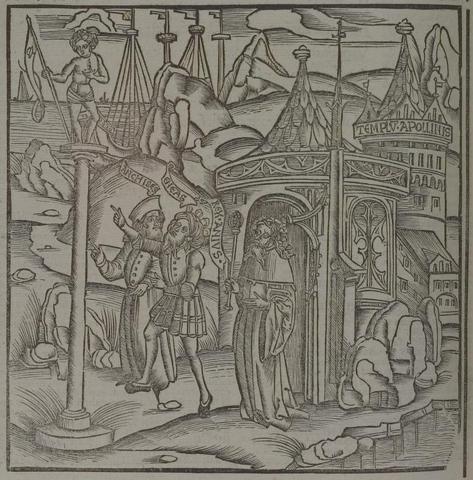




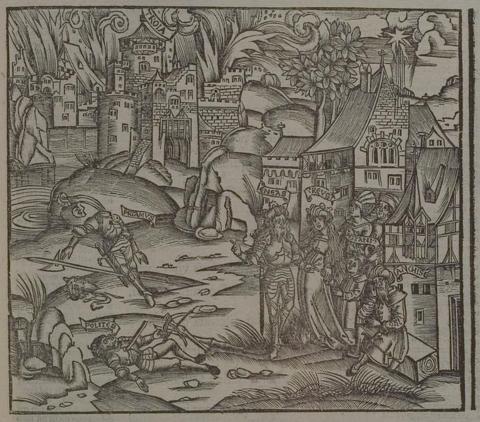
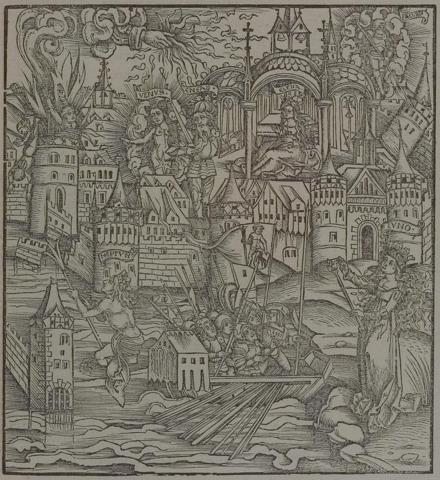
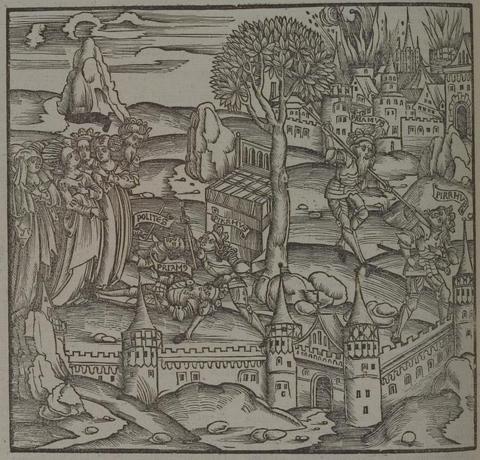

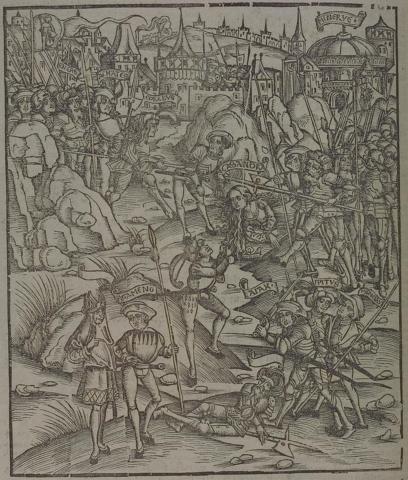
Sebastian Brant (1458–1521) was a humanist scholar of many competencies. Trained in classics and law at the University of Basel, Brant later lectured in jurisprudence there and practiced law in his native city of Strasbourg. While his satirical poem Das Narrenschiff won him considerable standing as a writer, his role in the transmission of Virgil to the Renaissance was at least as important. In 1502 he and Strasbourg printer Johannes Grüninger produced a major edition of Virgil’s works, along with Donatus’ Life and the commentaries of Servius, Landino, and Calderini, with more than two hundred woodcut illustrations. (Annabel Patterson)